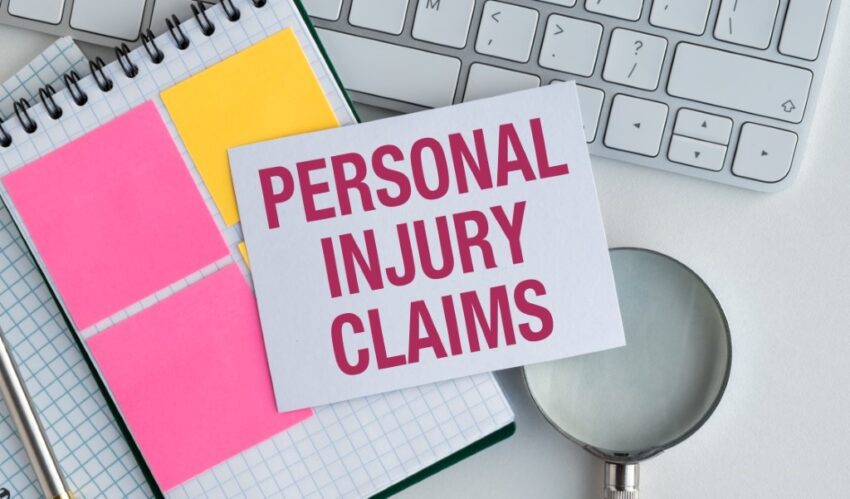Accidents catch people off guard. One moment, life feels normal. Next, it’s filled with doctor visits, insurance forms, and tough questions. The biggest question is: Is the injury serious enough for a personal injury claim?
The answer doesn’t depend only on pain or how dramatic the accident looked. It depends on whether the injury has a lasting mark on daily life, work, and finances.
Threshold Laws
In certain states, the law sets thresholds for when a personal injury claim can move forward. Car accident cases may require proof of a broken bone, scarring, or another clear medical condition. Meeting those thresholds isn’t just about the diagnosis. Proper documentation and medical testimony make the difference between acceptance and rejection.
Borderline injuries sometimes qualify if doctors confirm ongoing or permanent impact. Even modest injuries can meet legal standards if expert opinions show long-term effects. Knowing local laws helps people understand whether their situation reaches the necessary threshold. A great way to learn them is by partnering with a trusted personal injury lawyer.
For example, when searching for the best law firms in North Carolina, base your choice on reputation. The American Institute of Personal Injury Attorneys (AIOPIA) highlights firms that succeed in personal injury law while maintaining client satisfaction. That shows how legal representation must balance skill with steady client support when threshold laws apply.
Severity Beyond Pain
Pain alone rarely determines the seriousness of a claim. What matters is how the injury changes normal function. A bruised leg may look alarming, but it carries little legal weight if someone can walk and work within days. Conversely, nerve damage in a finger might seem small, yet it stops a hairdresser from earning a living.
Courts and insurers care about impact. They measure whether an injury blocks basic tasks, like driving, cooking, or sitting at a desk. Witness statements, alongside medical notes, help prove those limits. A personal injury claim strengthens when those limitations alter someone’s routine in clear, practical ways.
Time as a Test
The recovery curve often signals whether an injury is serious. A sprained ankle that heals in ten days doesn’t carry the same weight as one that lingers for months with therapy sessions and recurring pain. Duration matters because it shows whether harm was brief or led to lasting problems.
Complications also change the outlook. An infection after surgery, delayed healing, or chronic stiffness can elevate an injury that first appeared minor. Doctors’ reports and treatment records show how a case evolves. In a personal injury claim, insurers often use expert opinions to judge if recovery was normal or turned into long-term harm.
Financial Consequences

Money tells part of the story. Medical expenses, therapy costs, and prescription expenses pile up quickly. Lost wages add another layer of strain. Even a moderate injury can become serious if it drains savings or prevents income.
Hidden costs weigh heavily, too. Parents may pay for childcare during hospital stays. Some households need help with chores or even installing ramps and handrails. A personal injury claim should account for every dollar spent adapting to circumstances created by the accident. These financial losses illustrate seriousness as clearly as medical expenses or scans.
Disruption of Daily Roles
Beyond bills and treatment, injuries strip away normal roles. A parent unable to lift a child, a weekend runner sidelined indefinitely, or a retiree who can’t garden anymore all face genuine losses. These disruptions show the personal side of harm, where seriousness means more than charts or test results.
Social participation often suffers as well. Missed events, canceled travel, or avoiding public spaces can reveal the injury’s reach. In many cases, courts view these changes as evidence of emotional distress. A personal injury claim becomes more persuasive when it includes proof of how much an injury reshaped ordinary life.
Psychological and Emotional Harm
Serious injuries aren’t always visible. Many accident survivors experience trauma, anxiety, or depression. Sleep problems and panic attacks often interfere with recovery and daily life. Emotional struggles matter in a personal injury claim when backed by counseling records or therapist notes.
For instance, a driver avoiding roads after a crash might lose independence and employment opportunities. Those setbacks matter just as much as physical pain. Consistent documentation of mental health care can help prove the injury’s full scope in personal injury cases.
When Minor Becomes Major
Some injuries start small but worsen over time. Whiplash, a knee injury that triggers arthritis, or a fall that limits mobility years later, can all reshape a case. What seemed minor at first may evolve into a major barrier.
Prompt medical care helps distinguish between accident-related harm and unrelated health issues. Delayed treatment allows insurers to argue that complications came from something else. Keeping records early strengthens a personal injury claim, even if the injury initially seemed minor.
Red Flags of a Strong Claim
Certain signals suggest an injury may justify a claim:
- Surgery or extended rehabilitation.
- Ongoing inability to perform work duties.
- Permanent scarring, loss of mobility, or nerve damage.
- Frequent medical visits across multiple specialists.
- Significant changes in emotional or psychological health.
Other signs appear less obvious but matter just as much. A family’s daily routine may collapse when one member loses independence. Career paths sometimes stall when training or promotions get interrupted. Broader disruptions show how one injury can affect every part of life, especially in complex personal injury cases.
Conclusion
The question ‘Is your injury serious enough for a personal injury claim?’ doesn’t have a simple yes or no answer. Severity lies in how the injury affects function, recovery, medical bills, identity, and emotional stability. The combination of those factors shows whether a claim carries weight.
Accidents leave marks both visible and invisible. The best way to judge seriousness is by looking at the impact over time and across all parts of life. Careful records, prompt care, and solid proof of disruption give a personal injury claim the best chance to succeed with help from a skilled personal injury lawyer.


